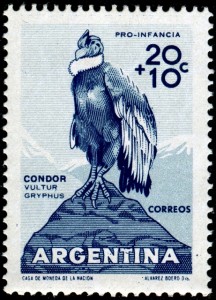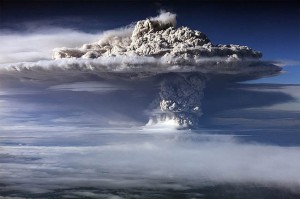Week 18 – 13 November 2016:
Did I Just Hear An Explosion?
In an environmental sense, a catastrophe is a sudden and violent change, unpredictable and experienced infrequently, but resulting in widespread damage. Earthquakes, cyclones, tsunamis, cataclysmic floods and wildfires create such rapid changes in the physical environment as to challenge the ability of plants and animals to respond. Should I stay, or should I flee?
With the eruption of the Puyehue volcano in northwestern Patagonia on June 4 2011, Pablo Alarcón of the National University of Comahue in Argentina and his colleagues were handed a unique opportunity to study the responses of Andean Condors. By chance, ten adult condors had been fitted with GPS tags seven months before the eruption, allowing the researchers to follow their movements with precision. Following the volcanic eruption, ten more condors were given tags.
When the volcano erupted, it ejected 950 million tons of ash into the atmosphere, with an initial column reaching 12 km (7.5 miles) into the sky. Drifting to the east, the ash blanketed 24 million hectares (92,000 square miles). Silica was the major constituent of the ejected ash, which caused blindness, gastric distress and death to livestock, particularly sheep, over the following three months.
Inhabitants of the Andes Mountains, Andean Condors are large, mobile scavengers that feed mainly on carcasses of large and medium-sized mammals. Like sheep. So when the Puyehue volcano erupted, condors in the area faced a choice. Should they stay in the area and take advantage of a sudden rich feeding opportunity, but risk being harmed by the ash, or should they leave behind the habitat that they knew well in an attempt to live out the catastrophe elsewhere?
Alarcón and his coworkers predicted that condors would change their behaviours over time, initially avoiding the potential damage of the volcanic ash, later moving back to take advantage of the opportunity to eat dead livestock, but then avoiding those affected areas after the food had been depleted.
Did that happen? “Interestingly,” wrote Alarcón et al., “no strong eruption-induced effects were apparent on the movement behavior of the condors studied… Overall, our results suggest that the studied birds maintained their general movements patterns after the volcanic eruption and remained largely exposed to the conditions imposed by the catastrophe.”
Perhaps conditions were not sufficiently severe after the eruption to change condor behaviour. Maybe the availability of food is not limiting for condors in this region, so that they didn’t need to take advantage of additional dead livestock. It could be that the advantages of being in an area and social situation that they knew well were greater than the risks of exposure to ash. Abandoning a breeding area comes with the risk that the individual might never get it back.
For the livestock of the region, the eruption of the Puyehue volcano was a catastrophe. For Alarcón and his colleagues, the eruption was serendipitous.
Alarcón, P. A. R., et al. 2016. Movement decisions in natural catastrophes: how a flying scavenger deals with a volcanic eruption. Behavioral Ecology 27:75-82.
Photo credits: Andean Condor stamp from Argentina – www.stampboards.com; Puyehue volcano eruption – www.guardian.co.uk



